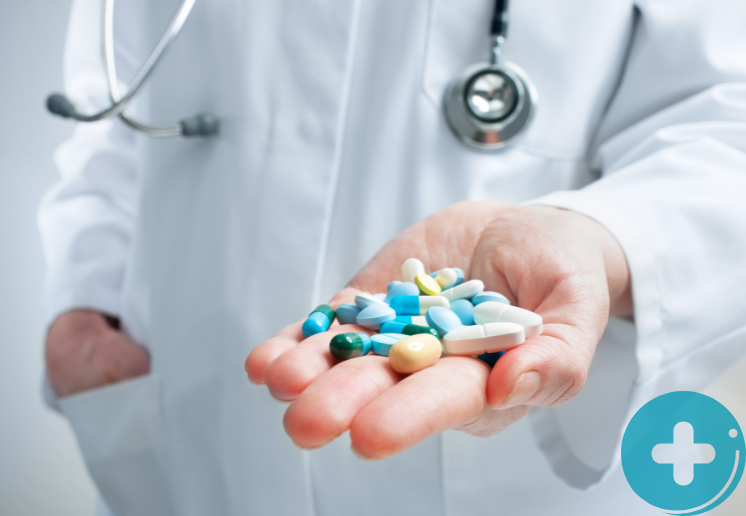Table of Contents
Fluid balance is something not many people think about when it comes to their health and wellness. It’s a delicate act our bodies perform constantly, yet disruptions can have profound consequences.
Left unchecked, fluid imbalances can lead to severe complications, like seizures or even coma. Two of the conditions that present this balance disruption are SIADH and DI. While SIADH causes fluid retention, DI results in excessive urination, requiring drastically different approaches.
So through this blog, we’ll cover these conditions in spades and discuss the symptoms and appropriate management. Let’s start with a SIADH vs DI comparison overview.
SIADH vs DI: Comparison Overview
| Factors | SIADH | DI |
|---|---|---|
| ADH Levels | High (Excessive ADH) | Low (Deficient ADH) or Ineffective ADH action |
| Fluid Status | Fluid Overload (Water Retention) | Low (Deficient ADH) or Ineffective ADH action |
| Serum Sodium (Na+) | Low (Hyponatremia) | High (Hypernatremia) |
| Serum Osmolality | Low (Diluted Blood) | High (Concentrated Blood) |
| Urine Output | Low (Concentrated Urine) | High (Dilute Urine) |
| Urine Osmolality | High (Concentrated Urine) | Low (Dilute Urine) |
| Urine Specific Gravity | High | Low |
SIADH (Syndrome of Inappropriate Antidiuretic Hormone)
Syndrome of Inappropriate Antidiuretic Hormone (SIADH), as the name suggests, is a condition where your body produces excess antidiuretic hormone (ADH). ADH, also called vasopressin, helps your kidneys manage the amount of water lost through urine. In SIADH, high ADH levels cause your body to retain too much water.
Causes of SIADH
Several factors can lead to SIADH, including:
- Certain medications
- Lung diseases
- Tumors
- Nervous system disorders
Symptoms of SIADH
Mild SIADH may not cause any symptoms. However, as sodium levels in your blood drop due to excess water retention, you might experience:
- Nausea and vomiting
- Headache
- Muscle weakness, cramps, or twitching
- Fatigue
- Irritability or confusion
- Seizures (in severe cases)
Diagnosis of SIADH
Doctors diagnose SIADH through a combination of:
- Medical history review
- Physical examination
- Blood and urine tests to check sodium levels and osmolality
Treatment for SIADH
Treatment for SIADH focuses on addressing the underlying cause and managing symptoms. Options include:
- Fluid restriction
- Medications to block ADH action (vaptans)
- Diuretics to increase urine output
If you experience any SIADH symptoms, especially nausea, vomiting, persistent headache, or changes in mental status, seek medical attention promptly. Early diagnosis and treatment can prevent complications.
DI (Diabetes Insipidus)
Diabetes insipidus (DI) is an uncommon condition that disrupts your body’s fluid balance. It’s caused by problems with a hormone called antidiuretic hormone (ADH), also known as vasopressin. ADH helps your kidneys regulate the amount of fluid in your body.
Types of DI
There are four main types of DI:
- Central DI: Damage to the hypothalamus or pituitary gland affects ADH production.
- Nephrogenic DI: Your kidneys don’t respond properly to ADH.
- Dipsogenic DI: A defect in the thirst mechanism causes excessive thirst and fluid intake, which then leads to increased urine output.
- Gestational DI: Occurs only during pregnancy when enzymes produced by the placenta destroy ADH in the mother.
Causes of DI
The causes of DI vary depending on the type:
- Central DI: Head injuries, surgery, tumors, infections, or genetic conditions.
- Nephrogenic DI: Certain medications (like lithium), kidney disease, high calcium levels, or genetic conditions.
- Dipsogenic DI: Damage to the thirst center in the hypothalamus, mental health conditions.
- Gestational DI: Placental enzymes breaking down ADH.
Symptoms of DI
The most common symptoms of DI are:
- Extreme thirst (polydipsia)
- Excessive urination (polyuria), even at night (nocturia)
- Pale urine
- Dehydration
- Electrolyte imbalance
- Hypernatremia (high sodium levels in the blood)
Diagnosis of DI
Doctors diagnose DI through:
- Medical history review
- Physical examination
- Urine and blood tests
- Water deprivation test
- MRI of the brain (to look for pituitary or hypothalamus abnormalities)
Treatment for DI
Treatment depends on the type of DI:
- Central DI: Desmopressin, a synthetic form of ADH.
- Nephrogenic DI: Treating underlying causes, thiazide diuretics.
- Dipsogenic DI: Managing fluid intake, addressing underlying causes.
- Gestational DI: Desmopressin.
If you experience persistent, excessive thirst and urination, seek medical attention. Early diagnosis and treatment can improve your quality of life and prevent complications.
How Similar are SIADH & DI?
While SIADH and DI are distinct conditions, they share some similarities:
- Both involve a problem with the hormone ADH (Antidiuretic Hormone). SIADH involves excessive ADH production, while DI involves a deficiency or resistance to ADH.
- Both disrupt fluid balance in the body. SIADH causes the body to retain too much water, while DI leads to excessive fluid loss.
- Both can cause electrolyte imbalances. SIADH often leads to hyponatremia (low sodium levels), while DI can cause hypernatremia (high sodium levels).
- Both can be caused by various underlying conditions. These include certain medications, tumors, lung diseases, and nervous system disorders.
Despite these similarities, SIADH and DI are fundamentally opposite conditions with distinct causes, symptoms, and treatments.
But remember. This is for informational purposes only. For medical advice or diagnosis, consult a professional.
Lab Values for SIADH vs DI
When diagnosing SIADH and DI, doctors rely on a combination of factors, including medical history, physical examination, and lab results. Here’s a breakdown of typical lab values for each condition:
SIADH (Syndrome of Inappropriate Antidiuretic Hormone)
- Serum Sodium (Na+): Low (Hyponatremia) – typically below 135 mEq/L
- Serum Osmolality: Low – typically below 275 mOsm/kg
- Urine Osmolality: High – typically above 100 mOsm/kg (often > 300 mOsm/kg)
- Urine Sodium: High – typically above 20 mEq/L
- Urine Specific Gravity: High – typically above 1.010
Diabetes Insipidus (DI)
- Serum Sodium (Na+): High (Hypernatremia) – typically above 145 mEq/L
- Serum Osmolality: High – typically above 295 mOsm/kg
- Urine Osmolality: Low – typically below 300 mOsm/kg
- Urine Specific Gravity: Low – typically below 1.005
Osmolality measures the concentration of dissolved particles (like electrolytes and glucose) in a solution. It reflects the body’s fluid balance. On the other hand, Specific Gravity measures the density of urine compared to pure water. It provides an estimate of urine concentration.
FAQ on SIADH vs DI
Q.1) Can you have both SIADH and DI at the same time?
It’s extremely rare to have both conditions simultaneously. They represent opposing imbalances in fluid regulation.
Q.2) Who is at risk for developing DI?
Risk factors for DI vary depending on the type. Central DI can be caused by head trauma, surgery near the pituitary gland, or tumors. Nephrogenic DI risk factors include certain medications (like lithium), kidney disease, and genetic conditions.
Q.3) Can SIADH or DI be inherited?
In rare cases, both SIADH and DI can have a genetic component, but most cases are acquired due to other underlying conditions.
What’s the Takeaway?
SIADH and DI, while both involve disruptions in fluid balance regulated by antidiuretic hormone (ADH), represent fundamentally opposite conditions.
SIADH is characterized by excessive ADH production, leading to water retention, low serum sodium (hyponatremia), and concentrated urine. Conversely, DI results from insufficient ADH or the kidneys’ inability to respond to it, causing excessive water loss, high serum sodium (hypernatremia), and dilute urine.
Rather than self-diagnosing the conditions like SIADH and DI, opt for a doctor consultation. And if you want to learn the best ways to treat these conditions as a registered or practical nurse, sign up for a course with FBNPC today!



